Articles and Features
Standards & Practices, Volume 1
Barry Le Va
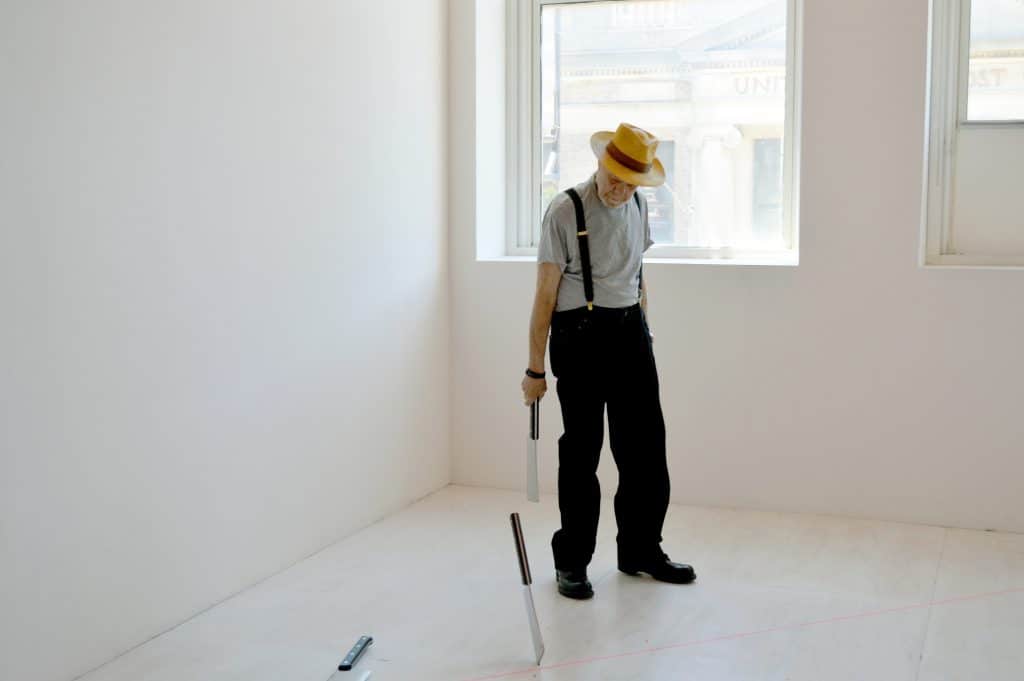
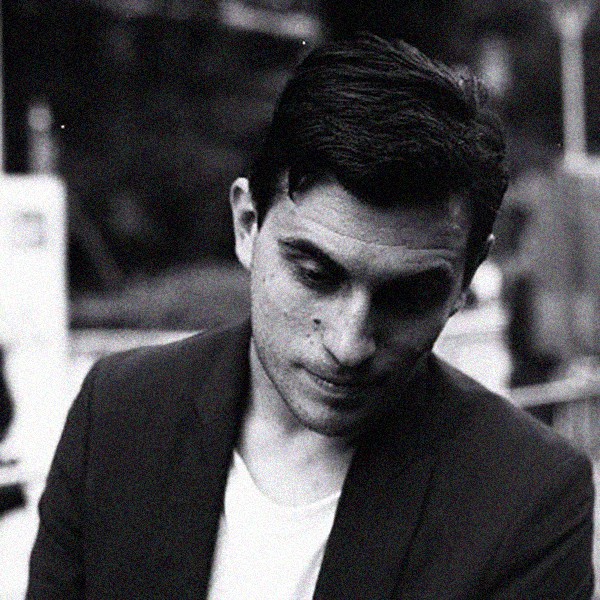
William Pym
Standards & Practices
Comedian Dave Chappelle has a bit in his last standup special where he talks about being called to the Standards and Practices department of his cable network and being told to do things differently. He’s not too bothered about what the network thinks. There’s a vulgar, uproarious punchline. I like the idea of standards and practices. It makes for a good joke. The enforcer of arbitrary rules and norms, a person whose job it is to frame what’s right, right now. For how can you tame a moment? In the international art world, where I have worked since 2002, I grew to become very familiar with a world of amorality, grandiosity and arrogance. I watched pre-2008 hypercapitalism change everyone’s style, and watched money get darker. Now the art world is being rebuilt, like everything else, in the image of a new generation. And one thing is true now as it was then — the art world is a place of porous standards, and practice takes many forms. I am still here, somehow, and I am the Standards and Practices department.
Volume 1: Barry Le Va
Barry Le Va is an artist in his 70s from California. In the 1960s he was at the vanguard of a type of art — adjacent to Minimalism, performance and conceptualism — known as process art. Process art talked about how it was made; it took on meaning through its creation; it rarely ended in a perfect object. Shattered glass. Piles of stuff. Indistinct modular objects. Barry Le Va’s style evolved into what is now penned in, for better and worse, under the broad designation “scatter art”. He is one of the daddies of things that look like what his things look like, and a lot of today’s art, across the spectrum, has grown out of the things Le Va has made. He’s legitimate.
In a black wool coat with the collar turned up, Le Va cut an imposing figure for the opening of his 2005 survey at the ICA Philadelphia. Some swagger to the guy. It was a winter night. It was maybe the fourth time I had seen him. He had taught an advanced sculpture course for a semester at Harvard five years earlier, and my sister Celia, who was taking the class, would fill me in at tavern catchups about both Le Va’s charisma and his diffidence to the details of the work she was making. We agreed, at the time, that he was being uncharitable here, considering how much attention and respect his work asked for. She had no beef with him, he just wasn’t a professor who was going to define her education. He seemed like a grouchy cool guy, and he was in and out of her life. I have no beef either; I’ve got time (sometimes) for grouchy cool guys. To use a pleasing bit of recent cultural slang you may wish to look up, I believe that one could say Barry Le Va had BDE.
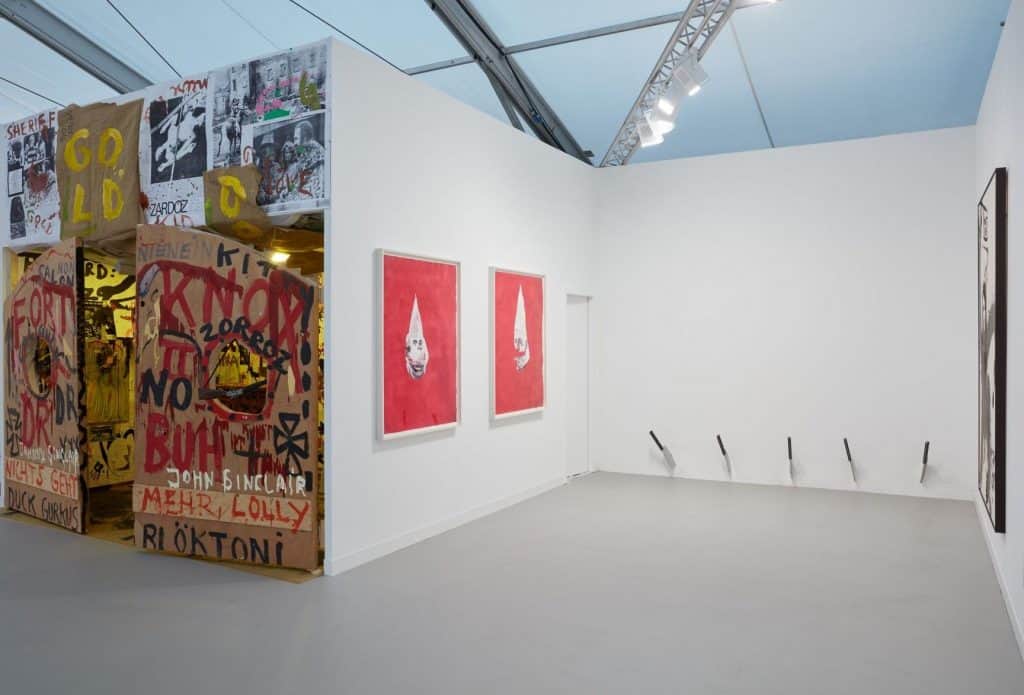
I saw Le Va’s Cleaved Wall (1969-70/2019) at David Nolan’s booth at Frieze London a few weeks ago. In the southern corner of the big top in Regents Park, at the back of Nolan’s presentation. Five meat cleavers embedded in the wall, in a line. These cuts, each a good few inches deep and fierce enough to hold the objects in the wall forever, are made by standing against the wall and vigorously swinging the meat cleaver from above your head into the wall next to your your knees. The line of cuts is created by swing, step, swing, step, and so on. Five times. The gaps between the knives are the width of the body that made the marks. It’s very neat, it looks great. The cleaved works have been a part of his practice since 1969, when — per curator Ingrid Schaffner’s ICA catalogue text — he bought a bunch of the biggest meat cleavers you can get from a butcher’s supply in Chicago. It’s a tool he uses, revisits, reimagines to this day. When the late, great Klaus Kertess organized a show Hands, Handles, Blades: Cleaver Configurations 1969-2009 at the Mary Boone Gallery, Le Va had room to time travel and compress 40 years of his practice, specifically by piercing walls and floors with giant heavy blades.
“It is an artwork of quality, as good quality as the meat cleavers used to chop up livestock in America.”
It’s good to see the cleavers. I understand they were originally talked about in terms of space, strength, violence, rules. A certain fury, mental or physical, and a certain control. At Frieze, in a mercantile environment, where artworks flirt and seek to grab your attention, all full of attitude, Cleaved Wall had a transcendent clarity, and an extraordinary indifference to whether it grabbed your attention. It seemed to exist above commerce, beyond the irrelevance of the marketplace — the endless flex, barter and jockey of live capitalism. It’s just there, robust and resolved. It is an artwork of quality, as good quality as the meat cleavers used to chop up livestock in America. Which means the best quality.
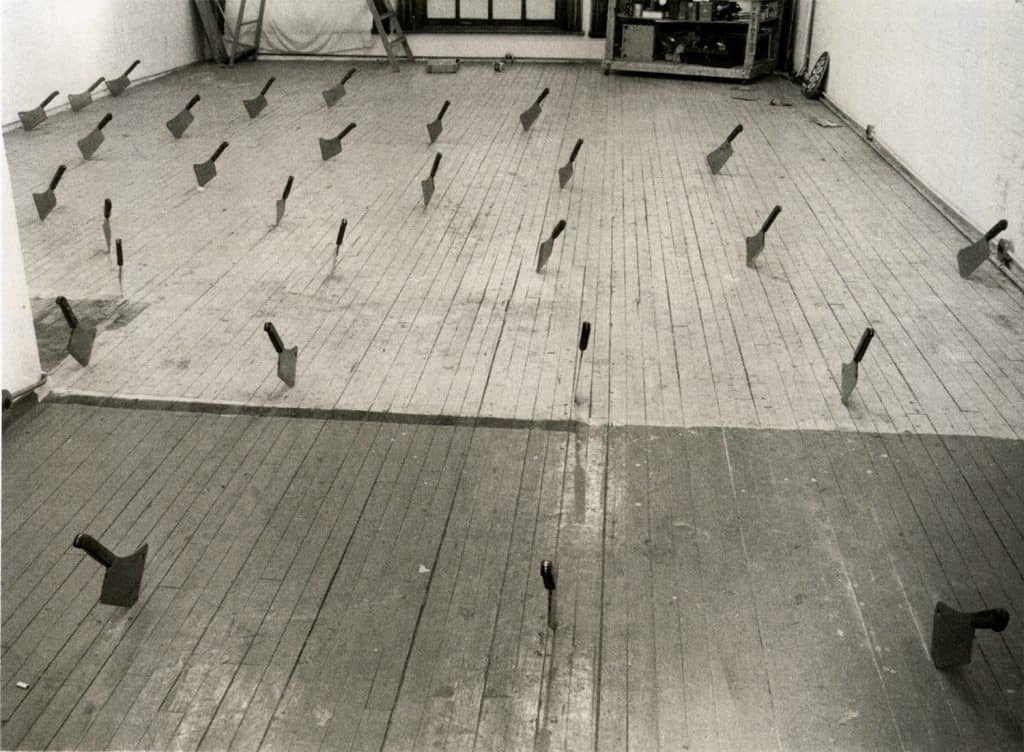
I wrote to the front desk of David Nolan asking about the work they showed in London: whether Le Va installed it, if not how was the installer chosen or prepared to do it right, and what happens when a granny buys it and wants to install it in her living room. I didn’t hear back from the gallery; I figure they either thought I was fishing for a gotcha story or simply don’t bother with emails from strangers asking questions, which I understand. We all get to that point in our inbox. I wrote without agenda, however: I don’t care how much it costs or how many versions exist, or how it’s installed by whichever tech is brave or unlucky enough at the time. There’s nothing suspect I wish to expose about it. I wanted to know about it.
Because Cleaved Wall revealed something surprising in the noise of the fair. The type of art Le Va pioneered in the 1960s was viewed as part of a collective tipping of boundaries, a radical redefinition in art as we tired of millennia of tradition about what an art object could be. This era of new beginnings opened doors for academics to drive discourse deep into the weeds of philosophy, identity, game theory, whatever. And this was a moment, for many people of anything less than very high intelligence, when theory left art behind. Suffice to say, Le Va’s On Center, On Edge Shatter Scatter (1968), in which he smashes piled sheets of glass with a sledgehammer, could be used to tidily illustrate the core vibe of that esoteric, trippy moment in art history. It looks wild; there’s a video, watch it, it’s wild. I was taught to understand his art as the art of disruption, as a fracture in the narrative. And it doesn’t look that way now.
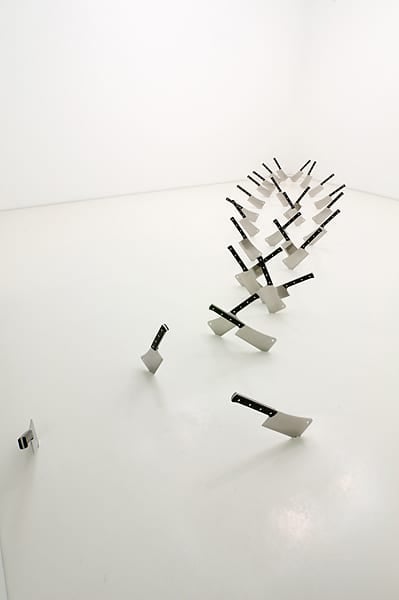

50 years on, Cleaved Wall looks like the clearest, most direct art around, not aloof or far away, not overly prescribed, not coded or in a foreign language. It hits instantly, like a Frank Stella painting. It hides nothing. It imposes nothing. Cleaved Wall is not a challenge or an exercise in complexity, it is something generous and super straightforward. Refreshingly so, and hilariously so. This art, once radical, looks classical. Barry Le Va’s violations of norms are now soothing and unviolent, despite the echoes of intensity they carry. Contemporary art began an ecstatic journey of expansion that started with the rejections of Le Va’s era, and this transformation continues today. Look back and enjoy, in Le Va’s work, the now-prosaic roots of today’s nutty splintered avant garde.